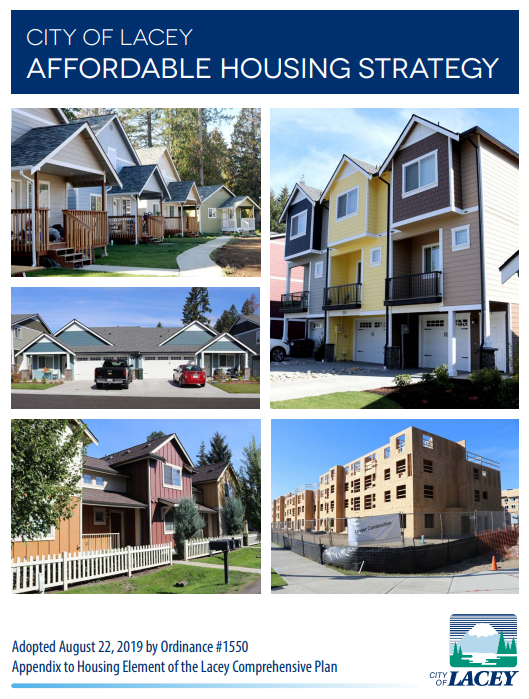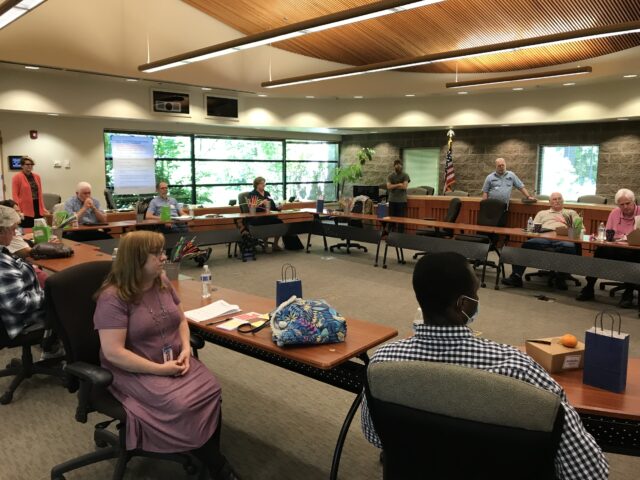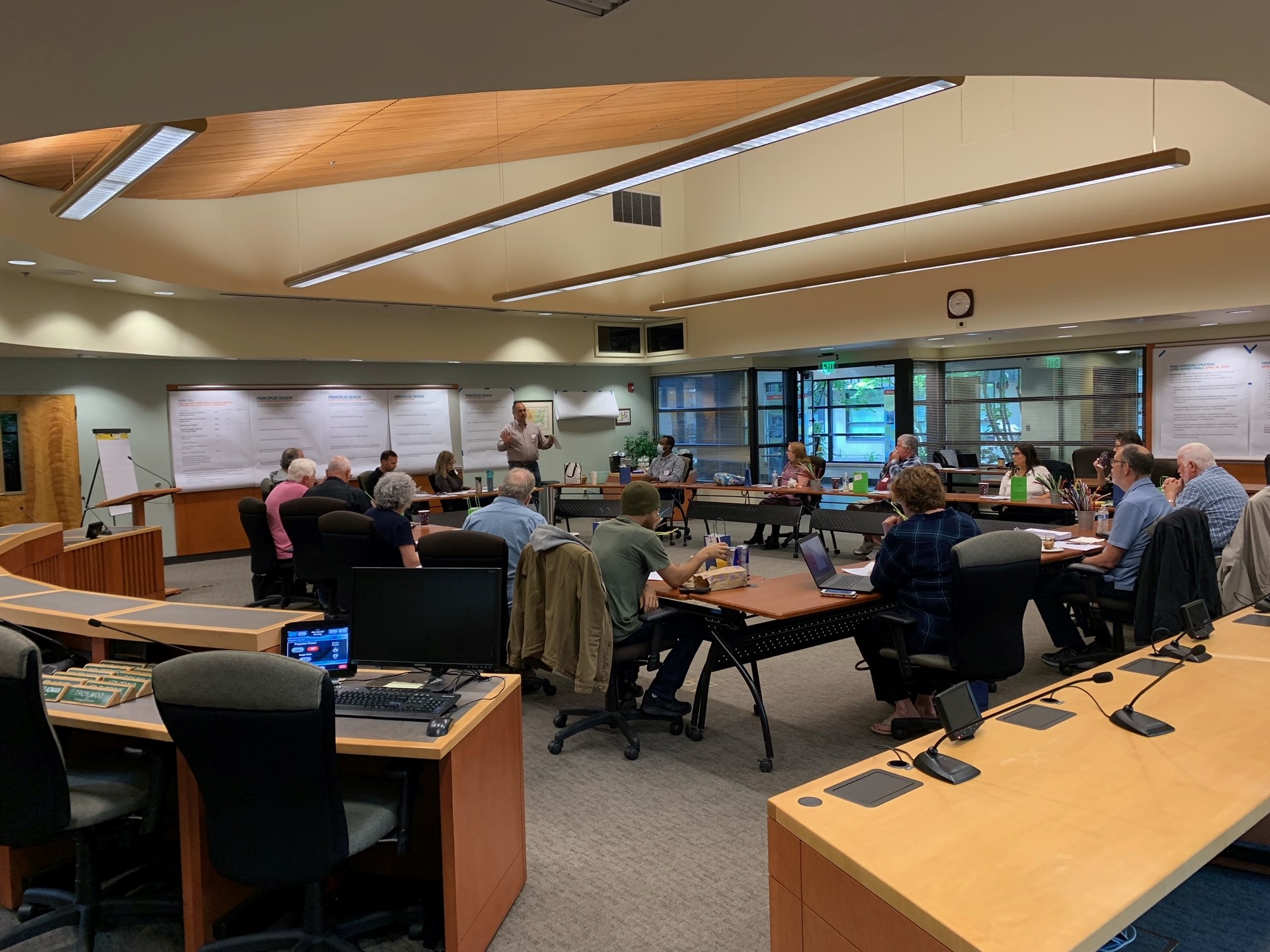
According to the Washington State Department of Commerce, a lack of affordable housing is the primary driver of homelessness. To address this challenge, the City of Lacey developed the Housing Element of the 2016 Comprehensive Plan which includes the City of Lacey Affordable Housing Strategy. This document provides a planning context for housing policies, legislative directives, regional cooperation, and community values. The Housing Element also contains a profile of Lacey’s existing and projected housing needs, and identifies general and affordable housing issues. The Housing Element is a joint planning document between the city of Lacey and Thurston County which applies to all areas incorporated or unincorporated within Lacey’s designated Urban Growth Area.
One novel approach to creating more affordable housing is the Accessory Dwelling Unit Program. This program offers Lacey residents the option to build a second, small structure on existing property. Accessory Dwelling Units can create affordable rental options.
What is affordable housing?
Lacey is in the midst of an affordable-housing crisis, and we are not alone.
According to the Washington State Department of Commerce, nearly 1 in 3 Thurston County households spend more than 30 percent of its income on housing. Many factors influence “housing affordability” but, what does “affordable housing” mean? The simple answer: housing (rented or owned) that costs no more than 30 percent of your household income, leaving the other 70 percent for food, clothing, transportation, and other necessities. So, what is “affordable” to a household earning $100,000/year is different than a household earning $50,000/year. It is relative to YOUR household income and YOUR housing costs. If you spend more than 30 percent of your household income on housing, you are considered “cost burdened.”
What Contributes to the Affordable-Housing Crisis?
Although many factors influence housing affordability such as employment, wages, building costs, internal/external market factors, etc. – the short answer: the need for housing is greater than the amount available. The high-demand/low-supply issue has caused many costburdened residents to move to outlying areas in order to afford housing. In addition, people are moving to our area from higher priced markets for the same reasons. Affordable Housing Strategy
Although the City does not actually build housing, housing affordability is a high priority for Lacey and the region. We strive to create and support programs that help our residents find and maintain an affordable place to live. The City is working with our public and privatedevelopment partners to provide a variety of housing options for all income levels.
The Lacey City Council recently adopted an Affordable Housing Strategy. The strategy was created with input from City Council, the Planning Commission, residents, and community stakeholders and partners. It outlines the housing-affordability issue and lists programs and services the City currently supports to help ease the crisis. In addition, it identifies potential policies and actions the City can take to reduce the effects of the housing-affordability issue.
Affordable housing is a complex issue. The City will continue to focus on improving our residents’ ability to have an affordable place to live.
Housing Development Trends
Many factors influence the availability of affordable housing in Lacey and the surrounding region. However, the primary issue is simply that the demand for housing is greater than the supply available. During the housing boom of 2005-2007, the City of Lacey issued a large number of single- and multi-family permits. Following the boom, the City averaged 265 single-family home permits per year, for 9 years, and only an average of 181 in the last 2 years. In contrast, after nearly 10 years of little or no development, multifamily development has recently surged—including 681 permits issued in 2016 and 643 permits issued in 2018.
Although the City does not actually build housing, we are working with our public- and private-development partners to provide a variety of housing options for all income levels. The recent increase in multi-family housing units helps provide one- and two-bedroom rentals that are in high demand. This is a bright spot in the housing shortage, but unfortunately, the market is still trying to catch up to the demand. The City will continue to focus on improving our residents’ ability to have an affordable place to live.
Developments
Although the City does not actually build housing, we support programs that help residents find and maintain an affordable place to live. The following are examples of how Lacey has created an environment to promote the development of affordable-housing projects.
Habitat for Humanity South Puget Sound
Habitat for Humanity serves the very-low income families whose dream is to own their own home. Working with donors and volunteers, Habitat builds affordable housing communities in Thurston County. In 2005, the City of Lacey passed an ordinance creating a policy to waive development fees for Habitat for Humanity. These waivers allowed them to begin construction of the Deyoe Vista neighborhood — a 33-home, affordable-housing development — located near College Street and 37th Avenue. Habitat expects to have the neighborhood completed in late 2020. In 2019, the City extended these fee waivers to Community Housing Development Organizations.
The Reserve at Lacey – Affordable Senior Housing Project
The Reserve Properties provide affordable living opportunities for seniors and families in the Puget Sound Region. In January 2019, they began work on a multi-story, mixed-use building on the corner of Pacific Avenue and Carpenter Road (former Albertson’s site). The project includes 9,000 square feet of ground floor commercial space and 241 units of affordable senior housing. The units will be available for seniors who meet the income restrictions defined by the number of people in their household.
The City supported the developer’s application for financing with the Washington State Housing Finance Commission by providing written and oral testimony at the hearing. The developer was able to move forward with the project once they secured financing through the Commission.
Gayteway at Hawks Prairie
Construction of a 96-unit, multi-family development has begun on the site of the former Ranchotel (8819 Martin Way E). The property is located in the mixed-use high-density corridor zoning district, which permits residential development at a density between 12 and 20 units per acre. A developer can obtain a density-bonus incentive to build more than 20 units per acre if they include low-income housing in the project. For this project, the City and developer negotiated a density-bonus incentive with the requirement that 10 percent of the units must be rented to people who make less than 80% of the area median income.
The City will continue to focus on ways to increase the number of affordable housing units in our community. As you can see from the examples above, we can be creative and supportive in our approach to how this is accomplished.
Housing Action Plan
With help from Thurston Regional Planning Council, the cities of Lacey, Olympia, and Tumwater developed individual Housing Action Plans in order to encourage the construction of additional affordable and market-rate housing in a greater variety of housing types at prices accessible to a greater variety of incomes.
Funding for the Housing Action Plans was provided by the state legislature through HB 1923 and awarded by the Dept. of Commerce to each of the three cities. Read more about our region’s Housing Action Plans here.
Department Contact
Department
Community & Economic Development
email: planning@cityoflacey.org
phone: 360-491-5642
Hours
Monday - Friday: 9:00 am - 5:00 pm








